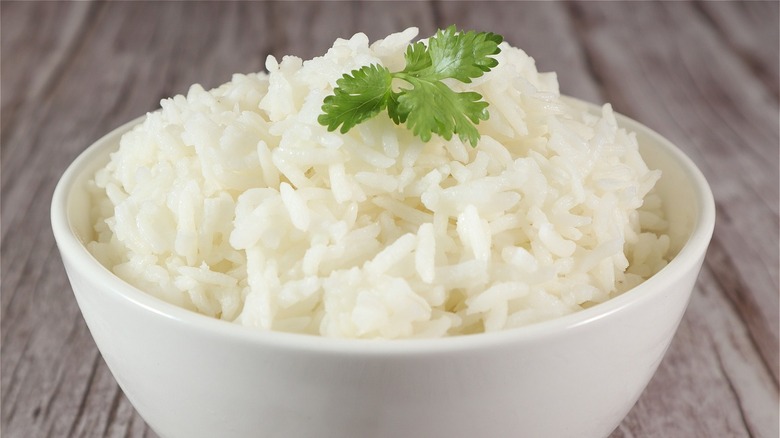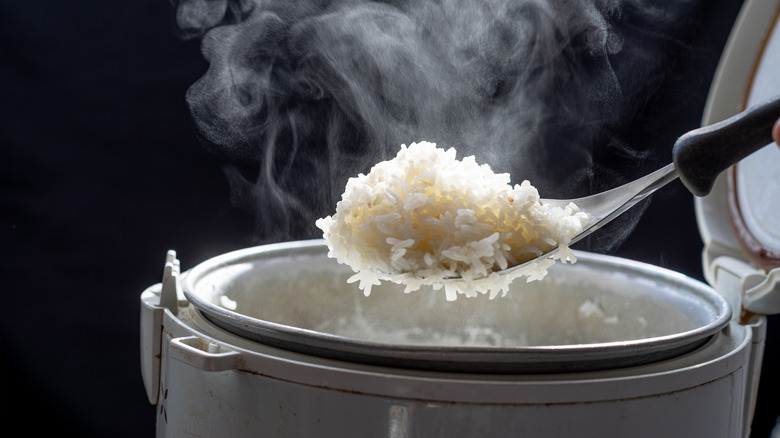The Weather Is Messing Up Your Rice. Here's How To Adjust It.
Oh, the weather outside is frightful, but the stovetop is so delightful. If you find yourself cooking based on your current weather conditions, you'd find that it's common practice among many others. When the outside temperatures boast in the 80s or higher, turning on the oven can cause a lot of extra heat and stress in your household, making a lot of people turn to more cold-based foods or grilling outside (via Consumer Reports). The opposite is true for those colder months when chowing down spoonfuls of homemade soup or pasta can warm the body from the inside out.
No matter the weather outside, rice is versatile and easy to make without needing to heat up the whole house while providing some warm food textures when it's cold outside. For instance, white rice can be used and paired with many different types of food and dishes. Rice can be temperamental though when it comes to water and cook time, especially depending on the type of rice you're cooking. Once you have it down, it's a basic science to get the perfect, fluffy rice for any dish you're making. But did you know that the weather and where you live can actually play a part in how you cook your rice?
Different weather conditions = different rice cook times
Just as quickly as the weather changes depending on where you live, so does the cooking time of rice. According to The Stack Exchange, the amount of moisture in the air can definitely affect the amount of water and time needed to get the perfect consistency of rice. For anyone who lives in more humid environments – most likely at a lower sea level – you might have to adjust the amount of water and cook time for your rice. Since the air is more humid, using a little less water and time could help make your rice come out the way you want it.
The same is true if you live in a dry, arid environment. Often, these locations are also at a higher altitude, which has always played a part in baking. According to Stack Exchange, one user explained that when cooking rice in her home at close to 5,000-feet above sea level, they have to cook the rice longer and use around 25% more water than what the recipe calls for. According to eHow, water and cook time are the most important change.
An easy method is to periodically check on your rice throughout the 10-15 minutes of its recommended cook time to adjust the water levels or time needed.

